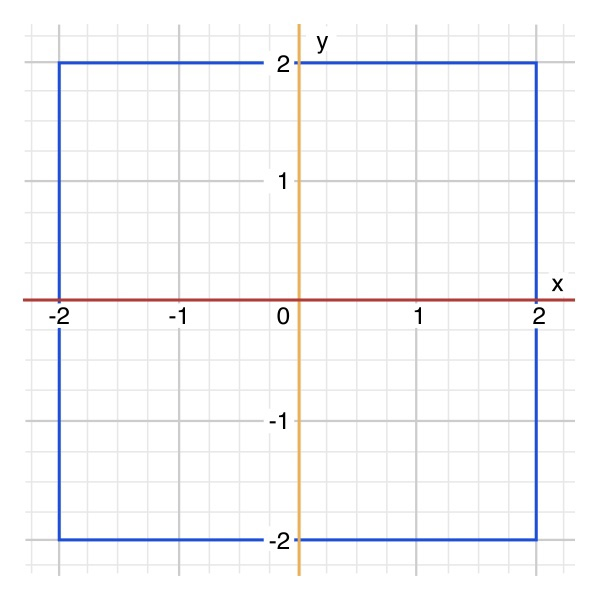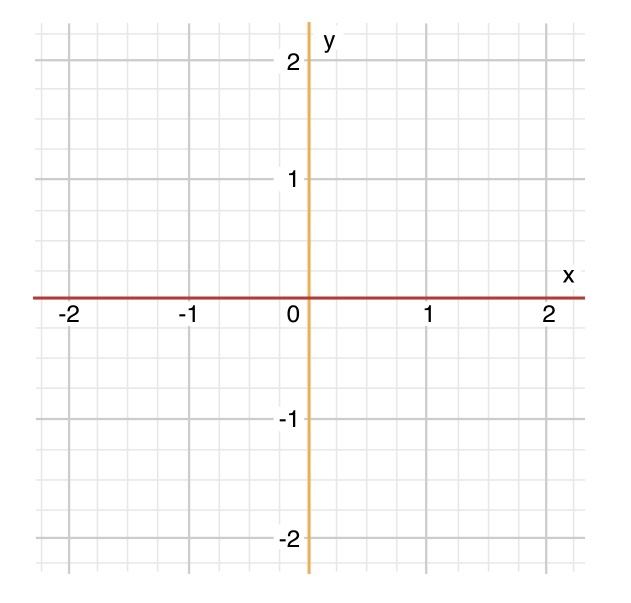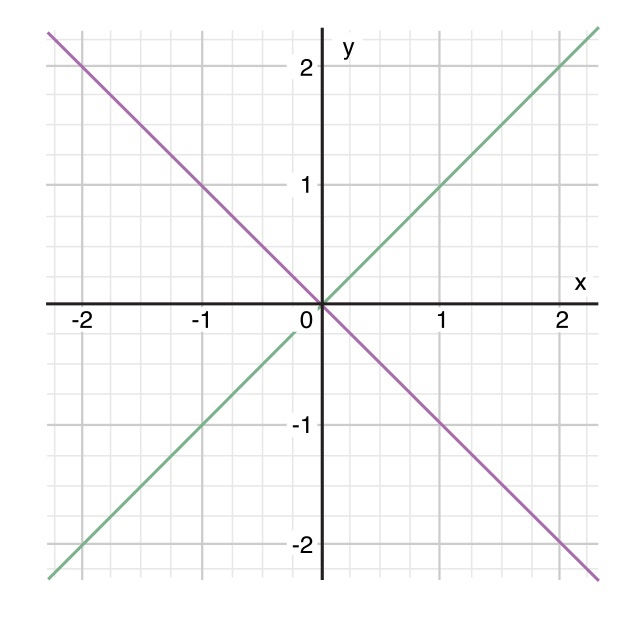Swift 제어문(Control Flow)
🌟 스위프트 제어문 : while, if guard, switch, for-in
✅ For-In 문(For-In Loops)
for-in: 배열, 숫자의 범위, 문자열을 반복한다.
//배열 반복
let names = ["Anna", "Alex", "Brian", "Jack"]
for name in names {
print("Hello, \(name)!")
}💻 출력 :
Hello, Anna!
Hello, Alex!
Hello, Brian!
Hello, Jack!
//딕셔너리 반복
let numberOfLegs = ["spider" : 8, "ant" : 6, "cat" : 4]
for (animalName, legCount) in numberOfLegs {
print("\(animalName)s have \(legCount) legs")
}💻 출력 :
cats have 4 legs
ants have 6 legs
spiders have 8 legs
사전(dictionary)에서 반환된키(key)-값(value)쌍으로 구성된 튜플을 순회하며 제어사전(dictionary)에 담긴 콘텐츠는정렬이 되지 않은 상태. 사전에 넣었던 순서대로 순회되지 않음
//1,2,3,4,5 반복
for index in 1...5 {
print("\(index) times 5 is \(index * 5)")
}💻 출력 :
1 times 5 is 5
2 times 5 is 10
3 times 5 is 15
4 times 5 is 20
5 times 5 is 25
for-in문을 순서대로 제어할 필요가 없다면, 변수자리에_키워드를 사용하면 성능을 높일 수 있음
//3의 10제곱
let base = 3
let power = 10
var answer = 1
for _ in 1...power { //사용 안 하면 비워둬도 됨
answer *= base
}
print("\(base) to the power of \(power) is \(answer)")💻 출력 :
3 to the power of 10 is 59049
//0부터 60까지, 60은 포함하지 않음. 0~59 -> 60번 반복
let minutes = 60
for tickMark in 0..<minutes {
// render the tick mark each minute (60 times)
}let minuteInterval = 5
for tickMark in stride(from: 0, to: minutes, by: minuteInterval) {
// render the tick mark every 5 minutes (0, 5, 10, 15 ... 45, 50, 55)
}stride(from:to:by:): from - 시작하는 수, to - 끝나는 수, by - 구간
let hours = 12
let hourInterval = 3
for tickMark in stride(from: 3, through: hours, by: hourInterval) {
// render the tick mark every 3 hours (3, 6, 9, 12)
}stride(from:to:by:): 다음은 구간을 3으로 설정한 경우
✅ While 문(While Loops)
🌟 while loops : while, repeat-while
1️⃣ while
while condition {
statements
}조건(condition)이거짓(false)일 때까지구문(statements)을 반복
 //GAME
//GAME
🌟GAME RULE
- 25개 정사각형, 0에서 시작하여 25까지 도달하는 것이 목표
- 만약 사다리 시작지점에서 멈추면 사다기 머리로 올라갈 수 있음
- 만약 뱀의 머리에서 멈추면 뱀의 꼬리로 내려가야 함
let finalSquare = 25
var board = [Int](repeating: 0, count: finalSquare + 1)
board[03] = +08; board[06] = +11; board[09] = +09; board[10] = +02;
board[14] = -10; board[19] = -11; board[22] = -02; board[24] = -08;
var square = 0
var diceRoll = 0
while square < finalSquare {
// roll the dice
diceRoll += 1
if diceRoll == 7 { diceRoll = 1 }
// move by the rolled amount
square += diceRoll
if square < board.count {
// if we're still on the board, move up or down for a snake or a ladder
square += board[square]
}
}
print("Game over!")💻 출력(중간에 체크하는 출력문 추가하여 출력) :
1번째 반복
square : 0 diceRoll : 1
square(square+diceRoll) : 1
square(square+board[square]) : 1
2번째 반복
square : 1 diceRoll : 2
square(square+diceRoll) : 3
square(square+board[square]) : 11
3번째 반복
square : 11 diceRoll : 3
square(square+diceRoll) : 14
square(square+board[square]) : 4
4번째 반복
square : 4 diceRoll : 4
square(square+diceRoll) : 8
square(square+board[square]) : 8
5번째 반복
square : 8 diceRoll : 5
square(square+diceRoll) : 13
square(square+board[square]) : 13
6번째 반복
square : 13 diceRoll : 6
square(square+diceRoll) : 19
square(square+board[square]) : 8
7번째 반복
square : 8 diceRoll : 7
square(square+diceRoll) : 9
square(square+board[square]) : 18
8번째 반복
square : 18 diceRoll : 2
square(square+diceRoll) : 20
square(square+board[square]) : 20
9번째 반복
square : 20 diceRoll : 3
square(square+diceRoll) : 23
square(square+board[square]) : 23
10번째 반복
square : 23 diceRoll : 4
square(square+diceRoll) : 27
Game over!
Program ended with exit code: 0
2️⃣ repeat-while
repeat {
statements
} while condition- 다른 언어의
do-while과 비슷함
//위의 게임을 repeat-while로 구현
repeat {
// move up or down for a snake or ladder
square += board[square]
// roll the dice
diceRoll += 1
if diceRoll == 7 { diceRoll = 1 }
// move by the rolled amount
square += diceRoll
} while square < finalSquare
print("Game over!")✅ 조건문(Conditional Statements)
🌟 if, switch 두 가지 조건문
1️⃣ If문
//if만 사용
var temperatureInFahrenheit = 30
if temperatureInFahrenheit <= 32 {
print("It's very cold. Consider wearing a scarf.")
}
💻 출력 :
It's very cold. Consider wearing a scarf.
//else도 사용
temperatureInFahrenheit = 40
if temperatureInFahrenheit <= 32 {
print("It's very cold. Consider wearing a scarf.")
} else {
print("It's not that cold. Wear a t-shirt.")
}
💻 출력 :
It's not that cold. Wear a t-shirt.
//else, else-if 사용
temperatureInFahrenheit = 90
if temperatureInFahrenheit <= 32 {
print("It's very cold. Consider wearing a scarf.")
} else if temperatureInFahrenheit >= 86 {
print("It's really warm. Don't forget to wear sunscreen.")
} else {
print("It's not that cold. Wear a t-shirt.")
}
💻 출력 :
It's really warm. Don't forget to wear sunscreen.
//else-if만 사용
//아무것도 출력되지 않음
temperatureInFahrenheit = 72
if temperatureInFahrenheit <= 32 {
print("It's very cold. Consider wearing a scarf.")
} else if temperatureInFahrenheit >= 86 {
print("It's really warm. Don't forget to wear sunscreen.")
}💻 출력 :
3️⃣ Switch문
switch some value to consider {
case value 1:
respond to value 1
case value 2,
value 3:
respond to value 2 or 3
default:
otherwise, do something else
}switch문의 기본 형태
//문자를 비교해 처리하는 경우
let someCharacter: Character = "z"
switch someCharacter {
case "a":
print("The first letter of the alphabet")
case "z":
print("The last letter of the alphabet")
default:
print("Some other character")
}
💻 출력 :
The last letter of the alphabet
4️⃣ No Implicit Fallthrough
🌟 C와 Objective-C의 switch 구문과는 달리 Swift의 switch구문은 암시적인 진행을 하지 않음. C나 Objective-C에서는 switch 구문이 기본적으로 모든 case를 순회하여 default를 만날 때까지 진행. 그래서 그것을 진행하지 않기 위해 break라는 문구를 명시적으로 적음. Swift에서는 break를 적지 않아도 특정 case가 완료되면 자동으로 switch구문을 빠져 나옴. 이런 사용법으로 인해 실수로 break를 적지않아 의도하지 않은 case문이 실행되는 것을 방지.
let anotherCharacter: Character = "a"
switch anotherCharacter {
case "a": // Invalid, case문에 body가 없으므로 에러가 발생.
case "A":
print("The letter A")
default:
print("Not the letter A")
}
// 컴파일 에러 발생!case안에 최소 하나의실행 구문이 반드시 있어야 함.
let anotherCharacter: Character = "a"
switch anotherCharacter {
case "a", "A":
print("The letter A")
default:
print("Not the letter A")
}
💻 출력 :
The letter A
case안에콤마(,)로 구분해서 복수의case조건을혼합(compound)해 사용
5️⃣ Interval Matching
let approximateCount = 62
let countedThings = "moons orbiting Saturn"
let naturalCount: String
switch approximateCount {
case 0:
naturalCount = "no"
case 1..<5:
naturalCount = "a few"
case 5..<12:
naturalCount = "several"
case 12..<100:
naturalCount = "dozens of"
case 100..<1000:
naturalCount = "hundreds of"
default:
naturalCount = "many"
}
print("There are \(naturalCount) \(countedThings).")
💻 출력 :
There are dozens of moons orbiting Saturn.
- 숫자의 특정 범위를
조건으로 사용
6️⃣ Tuples

let somePoint = (1, 1)
switch somePoint {
case (0, 0):
print("\(somePoint) is at the origin")
case (_, 0):
print("\(somePoint) is on the x-axis")
case (0, _):
print("\(somePoint) is on the y-axis")
case (-2...2, -2...2):
print("\(somePoint) is inside the box")
default:
print("\(somePoint) is outside of the box")
}
💻 출력 :
(1, 1) is inside the box
튜플을조건으로 사용
7️⃣ Value Bindings

let anotherPoint = (2, 0)
switch anotherPoint {
case (let x, 0):
print("on the x-axis with an x value of \(x)")
case (0, let y):
print("on the y-axis with a y value of \(y)")
case let (x, y):
print("somewhere else at (\(x), \(y))")
}
💻 출력 :
on the x-axis with an x value of 2
value bindings: 특정 x, y 값을 각각 다른case에 정의하고 그 정의된 상수를 또 다른case에서 사용
8️⃣ Where

let yetAnotherPoint = (1, -1)
switch yetAnotherPoint {
case let (x, y) where x == y:
print("(\(x), \(y)) is on the line x == y")
case let (x, y) where x == -y:
print("(\(x), \(y)) is on the line x == -y")
case let (x, y):
print("(\(x), \(y)) is just some arbitrary point")
}
💻 출력 :
(1, -1) is on the line x == -y
case에where조건을 사용
9️⃣ Compound Cases
let someCharacter: Character = "e"
switch someCharacter {
case "a", "e", "i", "o", "u":
print("\(someCharacter) is a vowel")
case "b", "c", "d", "f", "g", "h", "j", "k", "l", "m",
"n", "p", "q", "r", "s", "t", "v", "w", "x", "y", "z":
print("\(someCharacter) is a consonant")
default:
print("\(someCharacter) is not a vowel or a consonant")
}
💻 출력 :
e is a vowel
case에콤마(,)로 구분해여러 조건을 혼합해 사용
let stillAnotherPoint = (9, 0)
switch stillAnotherPoint {
case (let distance, 0), (0, let distance):
print("On an axis, \(distance) from the origin")
default:
print("Not on an axis")
}
💻 출력 :
On an axis, 9 from the origin
- 혼합 케이스에서도
값-바인딩을 사용
✅ 제어 전송 구문(Control Transfer Statements)
🌟 5가지 제어 전송 구문 : continue, break, fallthrough, return, throw
🌟 제어 전송 구문은 코드의 진행을 계속 할지 말지를 결정하거나, 실행되는 코드의 흐름을 바꾸기 위해 사용
1️⃣ Continue
let puzzleInput = "great minds think alike"
var puzzleOutput = ""
let charactersToRemove: [Character] = ["a", "e", "i", "o", "u", " "]
for character in puzzleInput {
if charactersToRemove.contains(character) {
continue
} else {
puzzleOutput.append(character)
}
}
print(puzzleOutput)
💻 출력 :
grtmndsthnklk
continue문은 현재loop를 중지하고 다음loop를 수행
2️⃣ Break
let numberSymbol: Character = "三" // 중국어로 3을 의미하는 문자
var possibleIntegerValue: Int?
switch numberSymbol {
case "1", "١", "一", "๑":
possibleIntegerValue = 1
case "2", "٢", "二", "๒":
possibleIntegerValue = 2
case "3", "٣", "三", "๓":
possibleIntegerValue = 3
case "4", "٤", "四", "๔":
possibleIntegerValue = 4
default:
break
}
if let integerValue = possibleIntegerValue {
print("The integer value of \(numberSymbol) is \(integerValue).")
} else {
print("An integer value could not be found for \(numberSymbol).")
}💻 출력 :
The integer value of 三 is 3.
break문은 전체 제어문의 실행을 즉각 중지.break문은loop나switch문에서 사용
3️⃣ Fallthrough
let integerToDescribe = 5
var description = "The number \(integerToDescribe) is"
switch integerToDescribe {
case 2, 3, 5, 7, 11, 13, 17, 19:
description += " a prime number, and also"
fallthrough
default:
description += " an integer."
}
print(description)
💻 출력 :
The number 5 is a prime number, and also an integer.
fallthrough키워드는 이후의case에 대해서도 실행. 앞에서 언급했던 것 처럼Swift에서는 한번 특정case를 타면 바로 그switch문은 종료. 마치case안에break를 자동으로 넣은 것과 같은 기능. 하지만 이fallthrough를 사용하면 이 자동으로break가 사용되는 것을 막는 효과.fallthrough는case조건을 확인하지 않고 그냥 다음case를 실행하게 만듭니다.
4️⃣ Labeled Statements
label name: while condition {
statements
}label이름과while조건을 넣어특정 구문을 실행하는 구문으로 사용
gameLoop: while square != finalSquare {
diceRoll += 1
if diceRoll == 7 { diceRoll = 1 }
switch square + diceRoll {
case finalSquare:
// diceRoll will move us to the final square, so the game is over
break gameLoop
case let newSquare where newSquare > finalSquare:
// diceRoll will move us beyond the final square, so roll again
continue gameLoop
default:
// this is a valid move, so find out its effect
square += diceRoll
square += board[square]
}
}
print("Game over!")switch문과 함께 사용
✅ 이른 탈출(Early Exit)
func greet(person: [String: String]) {
guard let name = person["name"] else {
return
}
print("Hello \(name)!")
guard let location = person["location"] else {
print("I hope the weather is nice near you.")
return
}
print("I hope the weather is nice in \(location).")
}
greet(person: ["name": "John"])
greet(person: ["name": "Jane", "location": "Cupertino"])💻 출력 :
Hello John!
I hope the weather is nice near you.
Hello Jane!
I hope the weather is nice in Cupertino.
guard문을 이용해 특정 조건을 만족하지 않으면 이 후 코드를 실행하지 않도록방어코드를 작성
✅ 이용가능한 API 버전 확인(Checking API Availability)
//구문의 기본 형태
if #available(platform name version, ..., *) {
statements to execute if the APIs are available
} else {
fallback statements to execute if the APIs are unavailable
}Swift에서는 기본으로 특정 플랫폼 (iOS, macOS, tvOS, watchOS)과 특정 버전을 확인하는 구문을 제공. 이 구문을 활용해 특정 플랫폼과 버전을 사용하는 기기에 대한 처리를 따로 할 수 있음.
//실제 사용 예시
if #available(iOS 10, macOS 10.12, *) {
// Use iOS 10 APIs on iOS, and use macOS 10.12 APIs on macOS
} else {
// Fall back to earlier iOS and macOS APIs
}
